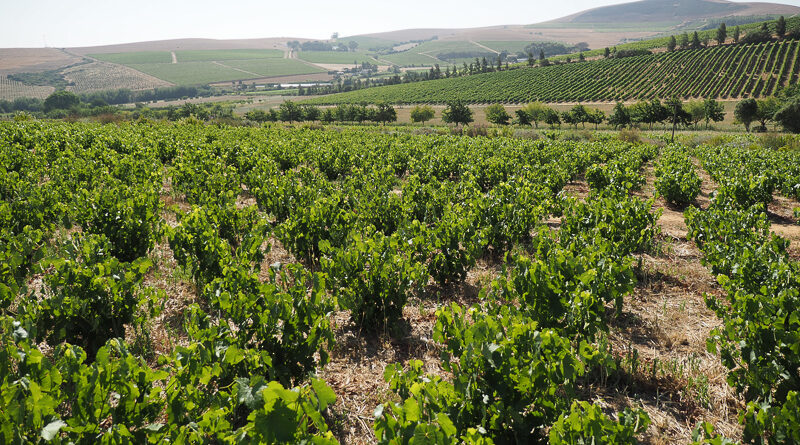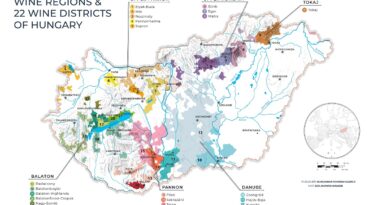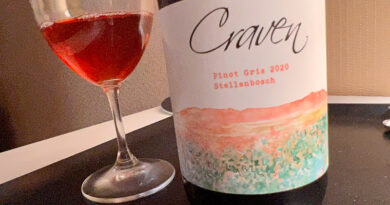Visiting Mullineux, one of South Africa’s top producers
Jamie Goode and Treve Ring continue their series on the Swartland, visiting Mullineux at their home base, Roundstone.
This was our first visit to Roundstone, which is the farm that is home to Mullineux wines. They started buying fruit from here in 2004 when they were working for Tulbagh Mountain Vineyards, and they moved here in 2007 with Mullineux.
It’s on the Kasteelberg, which is one of the three main mountains here. The others are the Paardeberg in the south (where Adi Badenhorst and Eben Sadie are based), which is a huge granite outcrop. The other side of the Kasteelberg is Riebeek Kasteel and Riebeek West, and then far in the north is Picketberg, which is where Craig and Carla (Testalonga) are.
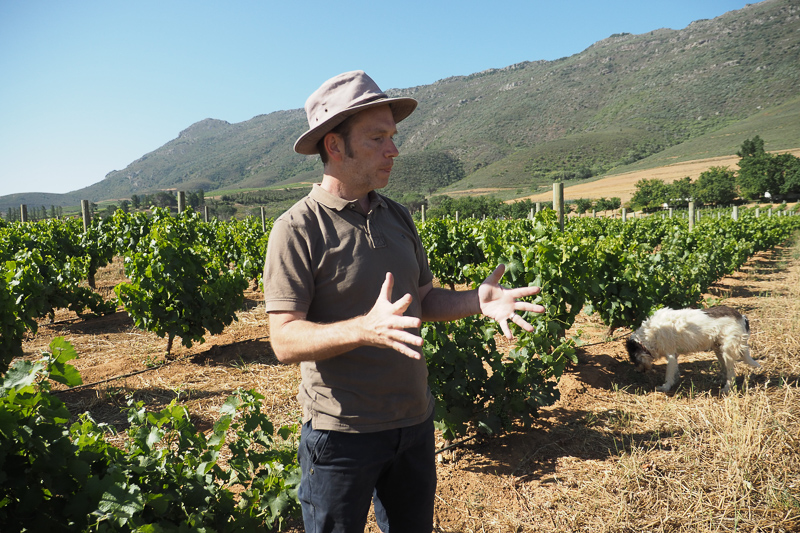
Most of the vineyards in the Swartland are on the slopes of the mountains, with huge open spaces on the lower plains that are mostly wheat farms.
As well as Roundstone, Mullineux have about 30 parcels that they source grapes from. Most are in the Paardeberg, but there are a couple on Kasteelberg. ‘It’s the model that works very well in the Swartland,’ says Chris Mullineux, ‘blending different varieties and vineyards.’
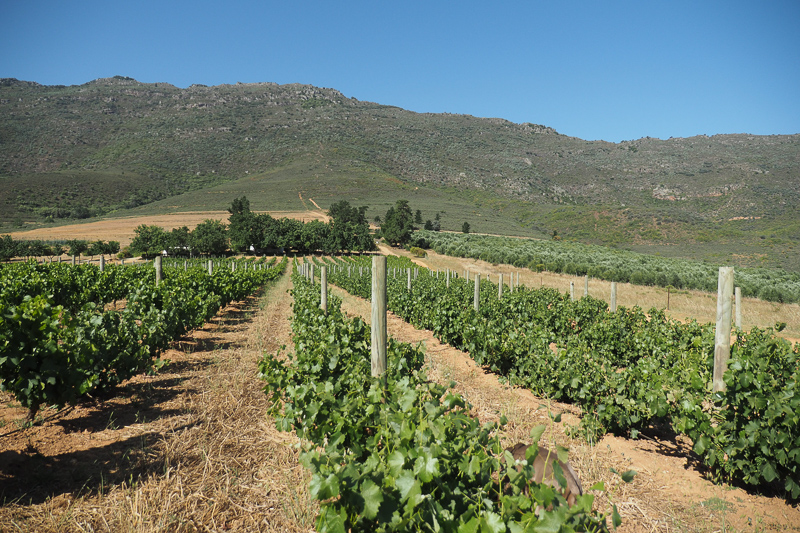
He shows us a block of Grenache Blanc, which was planted from cuttings taken from an old vineyard in the Picketberg. ‘We didn’t plant these vineyards,’ says Chris. ‘We only took over this farm in 2014.’ Originally, the vineyard was trellised, but the vines were quite small, so the Mullineuxs were able to cut them down and retrain them as bush vines. There are patches of Chenin Blanc in the middle of the Grenache Blanc, so it’s a massale selection of Grenache Blanc interplanted with Chenin. ‘In the Swartland we prefer bush vines,’ says Chris. ‘The vines are smaller and the yields are smaller, but what we really like about them is that they give a bit more shade to the grapes. We have an abundance of light, so tucking shoots in in a VSP, which works well in Stellenbosch and Constantia, here is almost too much.’
‘The farming is pretty simple,’ he says. ‘We are not certified organic or biodynamic. We just try to be as sensible as we can. We don’t use any herbicides. We put mulch and cover crops down.’
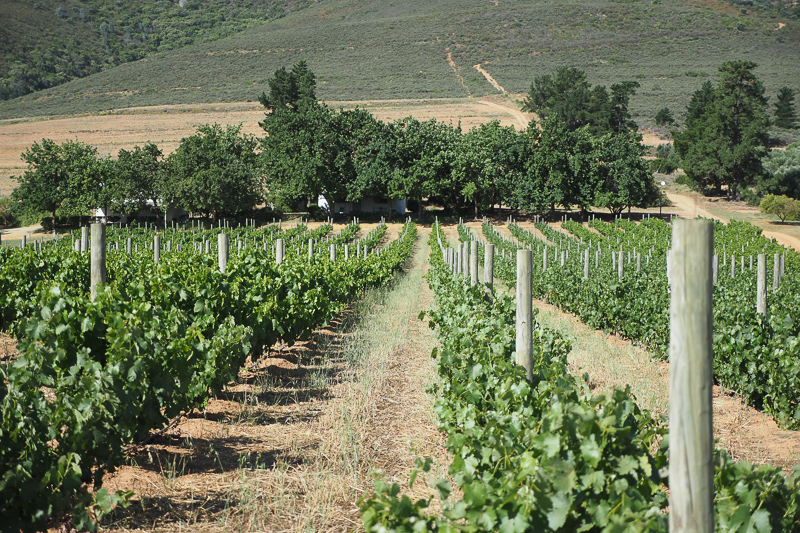
As far as possible they try to match the cover crops to the site. ‘Here on Kasteelberg it is much more cover crops that assimilate carbon, such as wheat and oats,’ says Chris. ‘The soils are relatively nutrient rich. We want to build structure and organic matter in the soil to hold moisture for the vines. In the Paardeberg it is the opposite: the issue is more nutrients because the soil is sandy and poor, so there we plant cover crops like fava beans and lupins that assimilate nitrogen.’
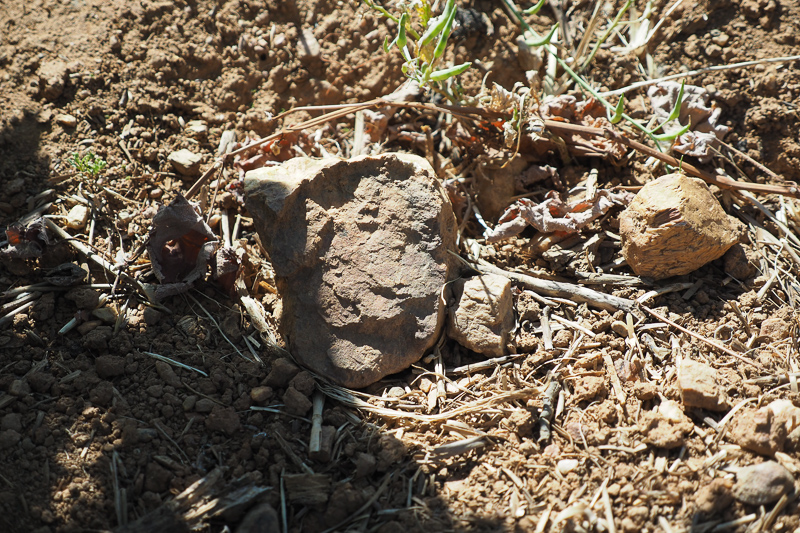
Soils are Roundstone are schist. ‘There is about a metre of topsoil and then there is hard slate,’ says Chris. ‘Porseleinberg is on the same mountain range, where most of the mountain has eroded away and there’s just the slate. There’s more topsoil here. Porseleinberg has blue slate that is much harder, whereas at Roundstone it is brown.’
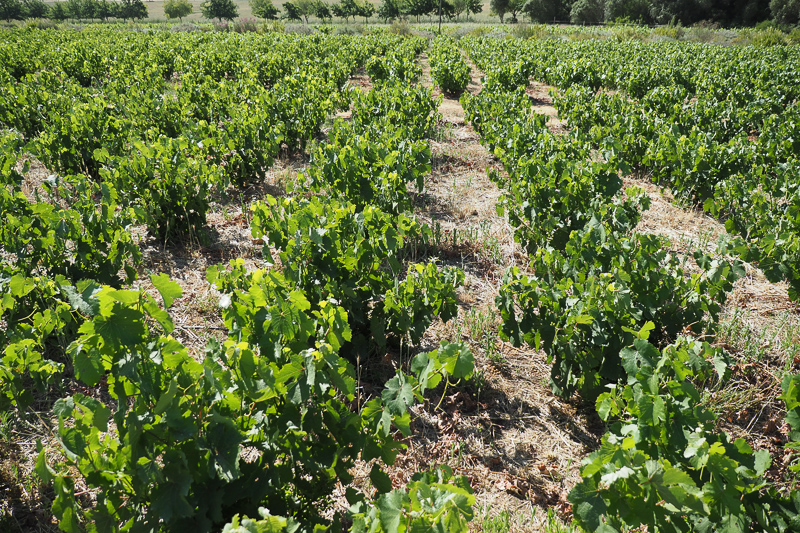
Farming is simple, and the Mullineuxs are aided by the fact that they aren’t farming a monoculture. ‘We are lucky to have a nice natural balance,’ says Chris. ‘In terms of insect pressure, there is nothing. In the 22 years that this vineyard has been planted they haven’t had to spray pesticide once, and this is because there isn’t a monoculture. We also have thousands of guinea fowl – it is like a mobile chicken tractor – they keep the pests under balance. The only thing we have to worry about is fungus. Most vintages we will just get away with spraying sulfur and copper maybe six times.’ In the 2020 vintage there was quite a bit of pressure so they used systemic fungicides. ‘We are just being sensible.’
The Roundstone farm is 100 hectares, with 25 hectares of vines. They work with another 20 hectares, taking the total to 45. They sell a small quantity of grapes to Donovan Rall and Eben Sadie. ‘Eben introduced us to the vineyard,’ explains Chris, suggesting it would be poor form not to allow him access to grapes any more now they have purchased the farm. ‘It is nice for us to be able to taste their wines [from this farm] and see what they are doing.’
Some of the Syrah vines they inherited were 15 years old and had developed thick trunks. To de-trellis them in order to turn them into bush vines, as they have done with the Chenin and Grenache Blanc, would have resulted in large cuts that might expose them to ESCA. So they have kept the trellis but allowed the canopies to sprawl. They tuck the main shoots in, but not the side shoots. This helps give the grapes partial shade, which keeps their aromatic complexity in this hot sunny region. Other than that, they farm the same way as they do with their bush vines, using mulches and cover crops.
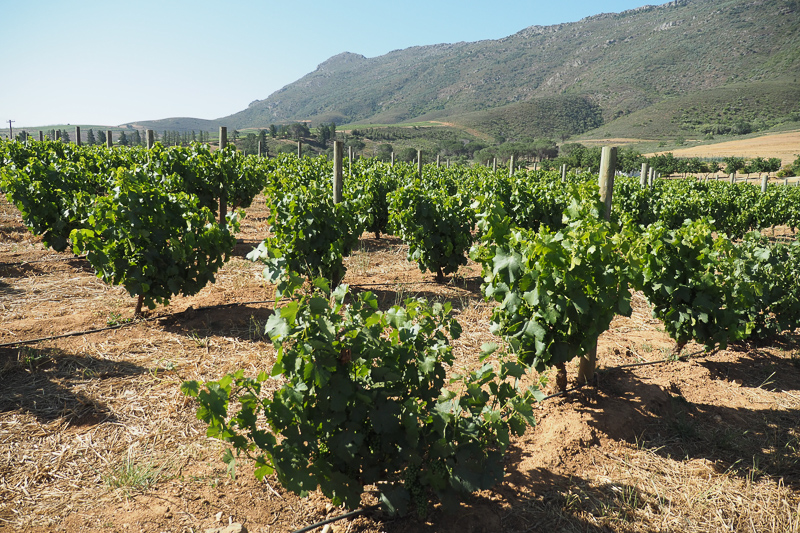
This approach has made the soils better at retaining water. Before 2014, they were just buying the grapes from this farm, and the owner was using supplementary irrigation. ‘He was irrigating 6-8 times a season,’ says Chris, and this was a couple of years before the big drought kicked in. Since they took over the farm, they have been planting cover crops and mulching. In the 2019/20 growing season, the fourth of the drought, they didn’t have to irrigate the block. ‘It is incredible to see how organic matter is helping,’ says Chris. ‘When we first took over the vineyard you couldn’t take a nail and hammer it into the ground. That is how hard and dead it was. Now, you can see how soft the soil is: it takes three or four years and you can turn it around.’
He says that with climate change they are rethinking what they are planting. They have room to plant higher up on the farm, but you need permission to plant even if you own the land, and where fynbos has been growing there are lots of problematic nematodes in the soil, so it takes time to prepare it for vineyards.
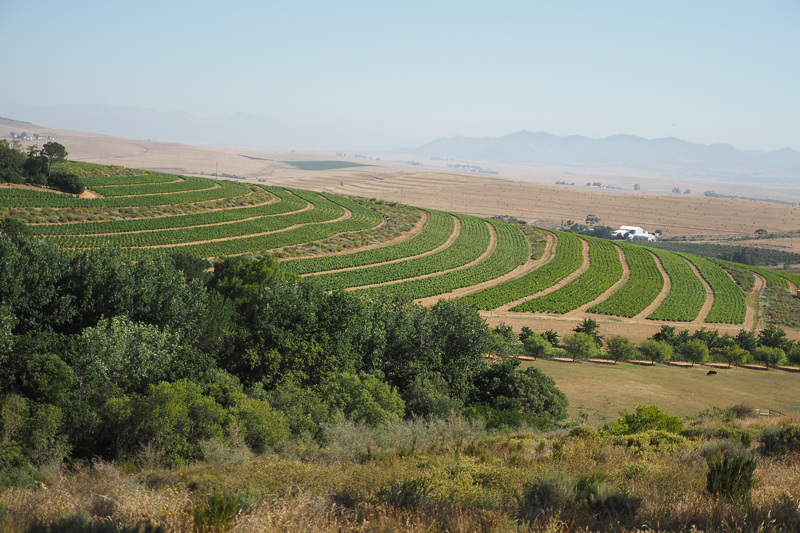
We went to look at the young vineyards that they planted in 2015. ‘The interesting thing is that this used to be a big wheatfield,’ says Chris. ‘It is 20 hectares. When we started planning it, it was a blank slate: we didn’t have to move anything or rip anything out. We work with Rosa Kruger, and this is her brainchild. It is a fascinating vineyard. The first thing you will notice is the vineyard rows are not straight: we have planted with the contours. We have tried to plant it in a way that is as sustainable as possible, and for it to live as long as possible. Here in the Swartland the main challenge is the dryness, so we have planted it in a way that the wines are able to live without irrigation. We have planted slightly higher density, 1.5 x 1.5 m. Inside the vineyard everything has to be done by hand because our tractors can’t get inside. The idea is that the roots of the vines can spread, and after one year they are already touching, and then they go down to use the full volume of soil. By planting along the contours, there is no one way for water to run when we have winter rain. It runs downhill, but the vines get in the way and it sinks into the soil. We keep as much of the winter rain in the soil as possible. Then if we have big storms the contours catch the winter run off and channel it into the dam, in case there is a need to irrigate. Because it is 20 hectares we have broken the vineyard into blocks or corridors, and then in between we have planted sections of fynbos. This is fynbos that grows on the mountain here. 90% of it is indigenous to Kasteelberg. We went to a local nursery and they took cuttings from the mountain, rooted it out with hormones, and then we planted it. This was planted at the same time as the vines. The idea is that this is a home for wasps and ladybirds to nest, and then they come and feed in the vineyard on aphids, mealybugs or anything that is growing there. It helps to keep the natural balance. A lot of the fynbos is aromatic: just as you have garrigue in the south of France or eucalyptus in Australia, fynbos is also aromatic. The idea is that volatile oils will land on the grapes and give a little bit of complexity to the wines.’
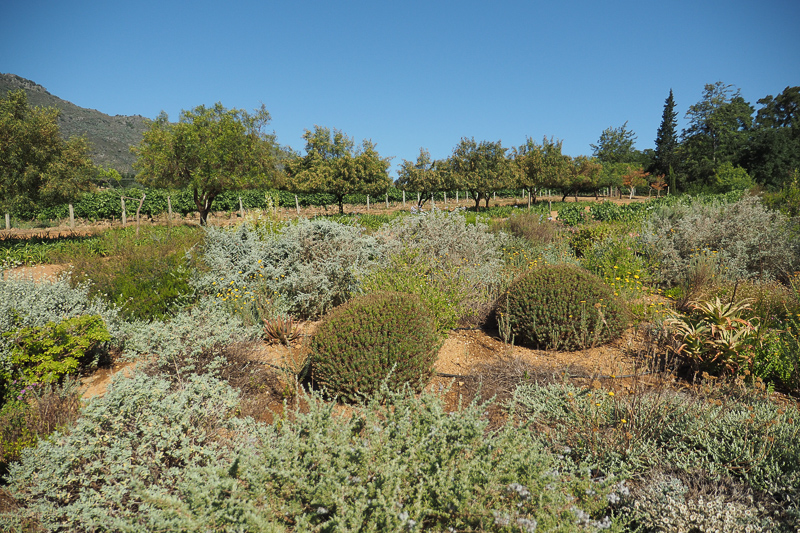
There are 290 fynbos species planted here and about 30 of them are aromatic.
‘The one thing we are struggling to figure out here is the cover crops,’ says Chris. ‘We don’t want dead soils, but we can’t get ploughs into the vineyard to plant. Up until now we have been doing everything by hand which is difficult when you are sowing cover crops, and then to mow them we have to come with a weedeater. It is a hell of a job. We are experimenting now with permanent cover crops that will grow in the winter and then stop growing in the summer, so they don’t compete with the vines for water. There are a few species of fynbos that do this. We can’t plant grasses because they will grow all summer long and they will kill the vines.’
They got their first crop off this new block of Chenin Blanc this year. ‘It was a little bit powerful,’ says Chris. ‘The vineyards ripen so quickly. It is going to go into Kloof Street at the moment.’ The grapes were at 16% potential alcohol. ‘It got ahead of us. It tasted amazing (we pick basically on taste), but it was powerful. There was freshness and awesome flavour, but on its own it was a monster.’
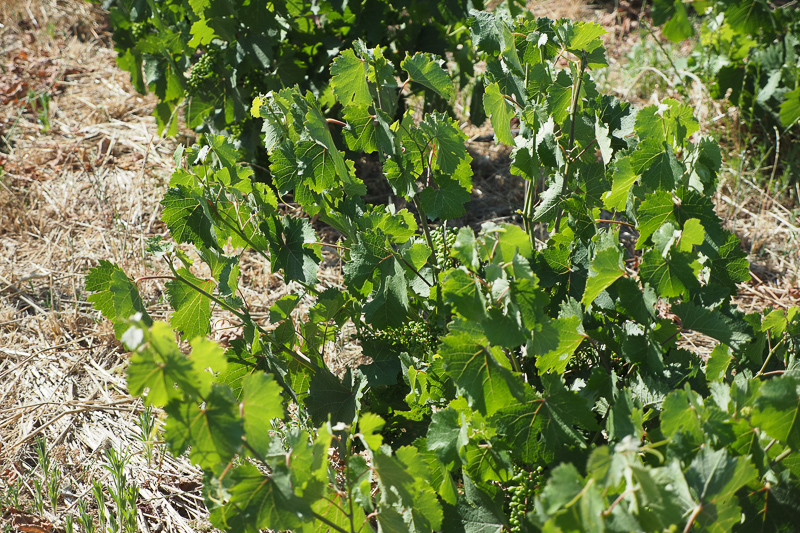
‘We have two fundamental principles,’ he explains. ‘We don’t work with any vineyards affected by virus, and we don’t work with any vineyards with tar poles. There two types of trellising pole in South Africa. The ones we use in our vineyard is are called Tanapoles, and they are slightly green when they are young. The old school way is they dipped the poles in tar, and we think this gives an aromatic flavour. In my opinion that is the “South African” taste.’ He adds, ‘obviously, there are many opinions.’
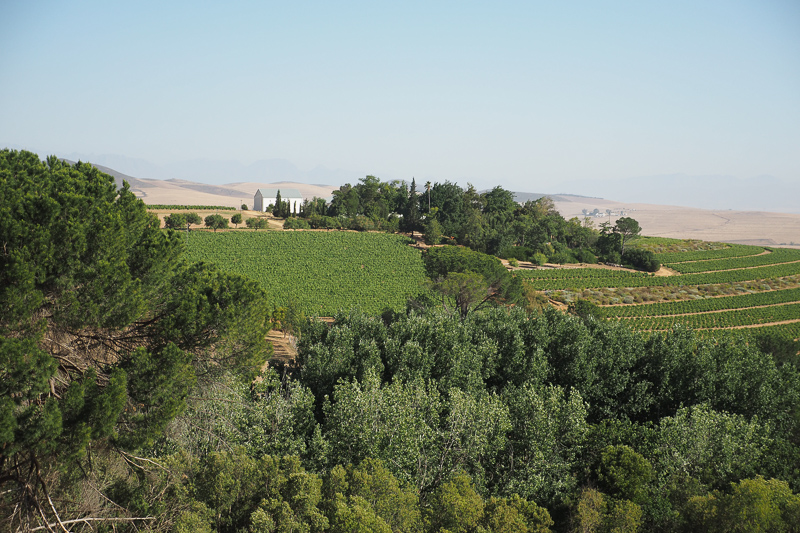
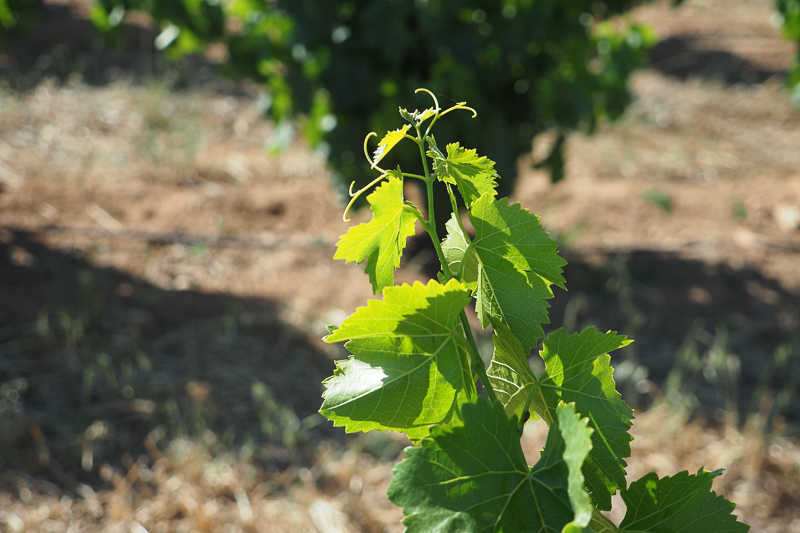
‘We had a bush vine Syrah vineyard that was super-vigorous, so we decided to trellis it. It was a 20 year old vineyard. We bought the poles and planted the vineyard. The next vintage the wine suddenly had the most hectic South African character, and it had never been there before. We thought it might be the barrels or something. But that winter we were in the vineyard pruning and it was a warm winter’s day. Andrea said, what’s that smell? I smell that flavour that was in the wine. We realized that it was the poles.’
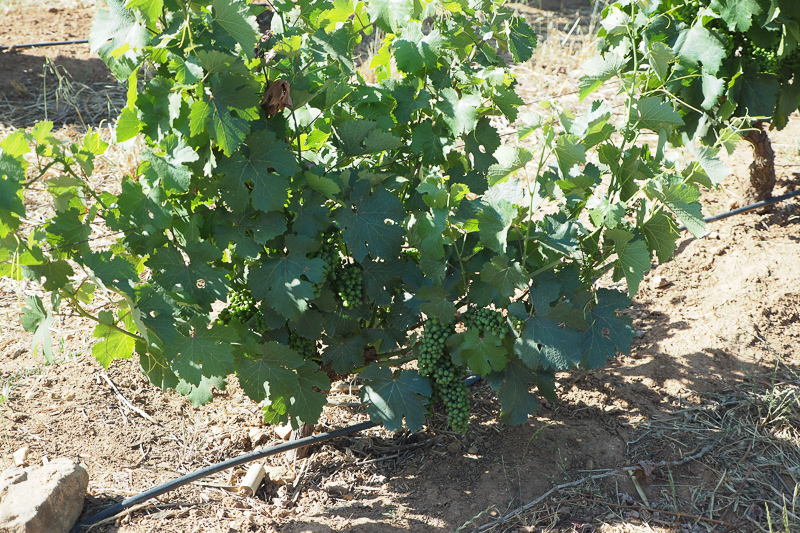
The drought years have been a challenge. ‘It has particularly struck specific vineyards,’ says Chris. ‘Roundstone hasn’t seen a lot of change, but in 2016 in our iron vineyard we lost 90% of the crop. In 2017 it was 50% down and in 2018 it was 80% down. It has been a huge knock. Quality wise it has been fine. It has been a huge struggle in terms of volume and for the farmers. In the Paardeberg it has been a bit easier. With deep sandy soils the vines are buffered, but it has still been tough.’
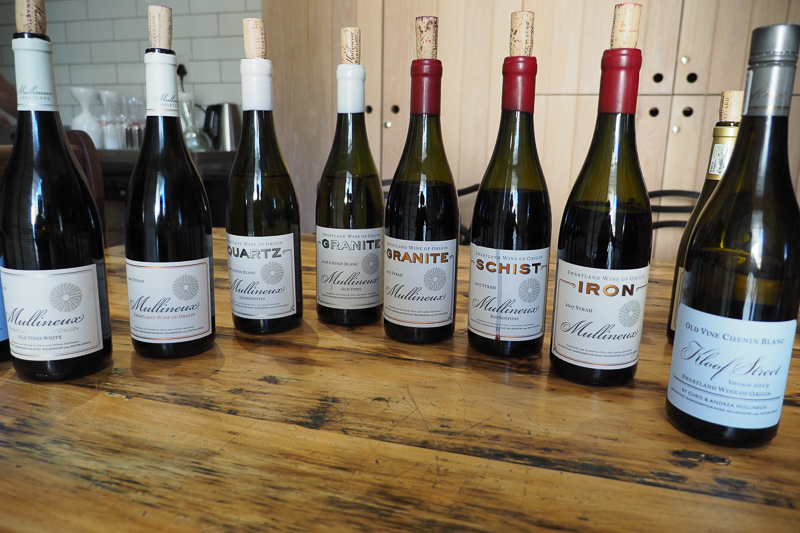
THE WINES
Notes by Jamie Goode (JG) and Treve Ring (TR)
Kloof Street Old Vine Chenin Blanc 2019 Swartland
First vintage in 2008 saw some wine off in bulk, but it was actually pretty good. So in 2009 started making Kloof Street, and it was the more powerful barrels that didn’t fit into the old vine white. From 2010 some batches were made specifically for Kloof Street. Large portion is steel fermented. Detailed apple, pear and mandarin nose. Has freshness but also some peachy richness. The palate is juicy and bright with keen acidity keeping the ripe fruity flavours fresh, with flinty notes, too. 90/100 (JG)
This wine started with the 2009 vintage, when they thought the fruit didn’t fit into the profile of their Old Vines White. In 2010 they started making batches specifically for Kloof Street. This Chenin was picked earlier, and native fermented (mostly) in stainless, with full MFL, and bottled (Stelvin Lux) after 7-8 months. Creamy pear, lemon curd and lemon blossom is spread across a fulle mouthfeel, grilled with a little pear skin. Easy but not dumbed down. 89/100 (TR)
Mullineux Old Vines White 2018 Swartland
Mostly Chenin with Clairette Blanche and Viognier, plus a little Grenache Blanc. All barrel fermented with around 5% new. 500 litre and foudres are what they are buying now. Lively, intense nose with some lime and graprefruit notes as well as faint hints of honey and fynbos. The palate is zippy and bright with some melony richness, but also fresh citrus, some cashew and tangerine brightness. Lots of flavour here and potential for development. 94/100 (JG)
About a quarter of the 2019 White Blend was lost when a transport truck tipped over. So if you find the 2019, cherish it even more than it normally warrants. This blends Chenin, Clairette Blanche, Viognier, and Grenache Blanc, with a tip of Semillon Gris, mostly sourced from older vines. The wine qualifies for the Old Vine Project, though there is near to 15% younger fruit in this vintage. This was native fermented in 500 and 5000L barrels (5% new). Lovely complex nose with fragrant melon, pear, apricot, white peach, with a generous pad of lees on the middle. Herbal imbued and textured, with a great savoury meadow grass note throughout to a humming, salted finish. Long and full in the mouth, this is quite impactful, yet still fresh, this is drinking beautifully now and will continue over the next few years. 92/100 (TR)
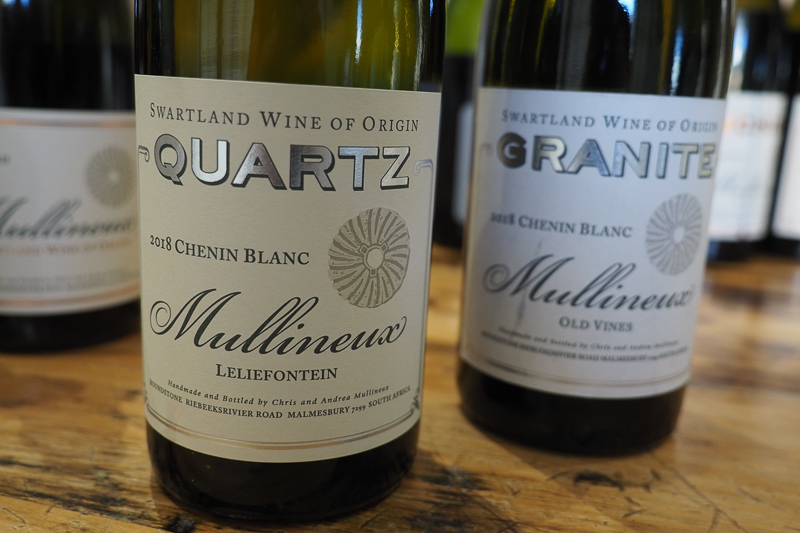
Mullineux Granite Chenin Blanc 2018 Swartland
Normally two vineyards on the Paardeberg, on a ridge close to Eben’s cellar. 14% alcohol. Deep sandy decomposed granite soils, which tends to give them high acidity. They are on poor soil so they tend to be a bit more mineral in style (low in nitrogen and this isn’t corrected). Mid-40s in age. Tensile energy in the mineral nose of this wine. Has fine herbs and a bit of spice. Focused and linear on the palate with a lovely mineral, spicy core and crystalline citrus fruit. There’s also a saline streak with real energy and electricity. 96/100 (JG)
From Paardeberg, and sourced from 2 different vineyards on the ridge (above Christa’s farm) and in deep sandy, decomposed granite soils, low in both pH, and nitrogen (which was helped with the cover crops). They see the highest acidity from this site. Vines were 42 and 46 years old at time of harvest. Stones, yellow fruit, pear skin and apricot pit is threaded with broken, decomposed stones, gripped with tension, and finishing with salinity. Lovely freshness and concentration in this structural wine, that wears its 14% confidently. 94/100 (TR)
Mullineux Quartz Chenin Blanc Leliefontein 2018 Swartland
Lots of light intensity in this vineyard. 13.5% alcohol. Ripe, aromatic peach and pear fruit nose. Rich but fresh stone fruit palate with nice acidity and a grapefruit and chalk edge. Has a nice grainy structural quality. Very stylish, showing some density and power, but finishes dry and spicy. 94/100 (JG)
From a site 4km away that they farm (not own). On quartz soils. The lower slopes and deep soils reflects a lot of light to the 25 year old vines. Quite powerful on the nose, with cream, lemon curd, and verbena ruling a creamy, powerful palate. The dry, textured, slightly warming finish lingers with elastic notes. 92/100 (TR)
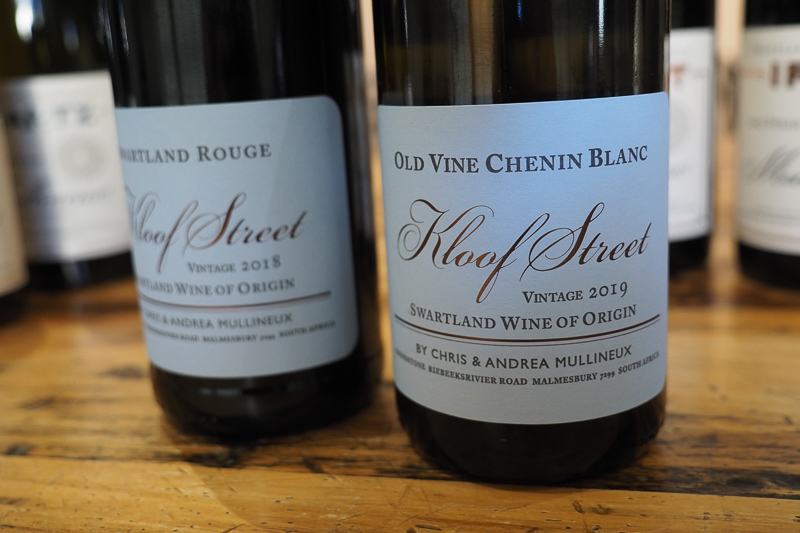
Kloof Street Swartland Rouge 2018
Based on Côtes du Rhône, and since 2017 it’s mainly Syrah and Tinta Barocca (44% this vintage). 20% whole cluster (at the bottom of the tank). 100% in oak, in barriques and some 5000 litre fermenters. Floral red and black cherry nose with some liqueur-like sweet fruit notes. Juicy, bright and focused with sweet, supple red cherry and strawberry notes. 90/100 (JG)
Inspired by time spent working in Côtes du Rhône, this is a blend of Syrah, Tinta Barocca, Grenache, Cinsault and Carignan, from 8 sustainably farmed parcels in different parts of the Swartland, and vines aging 12-40 years. Two parcels of Syrah and one parcel of Cinsault come from the stony shale and schist based soils of Kasteelberg; one parcel of dry land, bushvine Syrah, one Carignan, one Grenache and a single parcel of gnarly old dry farmed Tinta Barocca bush vine, come from the decomposed granite of the Paardeberg. Averaging 25% whole cluster, this was slowly native fermented (utilizing some 5000L fermenters) over 4-6 weeks, with daily pigeage. The wine moves to barrel for MLF before blending, and then a rest back in barrels (older 225L and demi-muids) for 11 months. Lovely wild black raspberry, sapid dark plum, brooding dark florals, leather, black cherry is imbued with fantastic peppery baking spices. Tannins are worn smooth, and acidity is easily in balance to counter Swartland’s sun ripeness. 90/100 (TR)
Mullineux Syrah 2017 Swartland
This is a blend of 11 different parcels from different parts of the Swartland. 50% whole cluster, a year in oak (mostly 500 litres) then in tank for a year. Vivid and precise with nice black cherries, some blackberry richness, a bit of sweetness to the fruit. Subtle tar and pepper notes here with good definition. A contoured, detailed wine with nice precision. 93/100 (JG)
The Mullineux classic Syrah is drawn from 11 parcels across the 3 Swartland syrah soil types they work with: granite, schist, and iron. Vines are between 22-29 years old. In 2017 they employed 20% whole bunch, and used more bigger format barrels than previous years, mixing 225L, 500L and foudres (15% new wood in the mix). After 1 year in wood, this was blended into tank for another year’s rest. In the draught 2017 year, berries were very small, and resulting wines quite intense. Wild, dark perfumed blackberries, cassis, thorns, tar, and broken stones lead through to a kirsch licked finish. The palate holds its stony freshness, and tannins are lightly sticky, yet firm, well integrated into the savoury fruit. 92/100 (TR)
The single soil-type Syrahs were first made in 2010. ‘These three Syrahs are made identically,’ says Chris Mullineux. ‘We try to pick them at the same ripeness, and there’s the same handling in the winery. They are also roughly the same age: all three vineyards are about 20 years old. They are about 80% whole cluster, spend a year in 500 litre barrels, and then a year in 2000 litre foudres.’
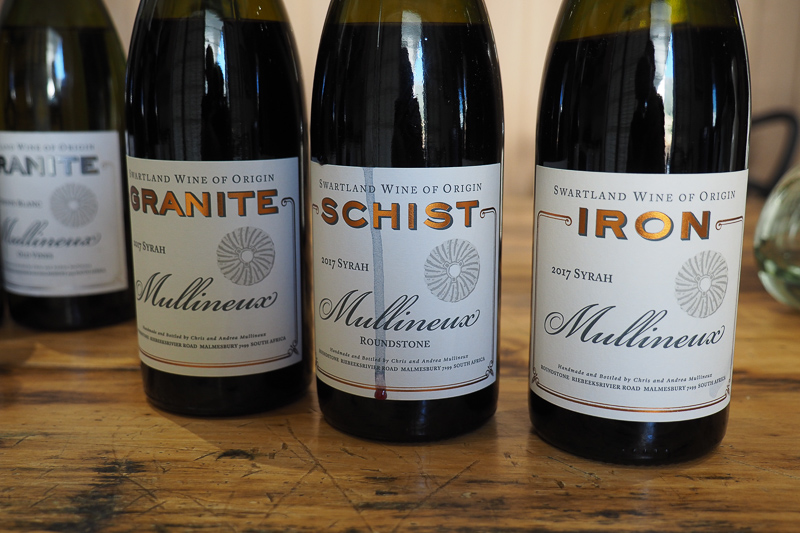
Mullineux Granite Syrah 2017 Swartland
14.5% alcohol. 3-4000 bottles. Single vineyard but can’t put the name on the label because of trademark issues. Fresh, bright, almost iodine/blood-like aromas on the nose alongside the berry fruits. Floral cherry fruit too. Supple, bright, stony, mineral palate with a wonderfully vivid savoury character. Nicely focused and pretty elegant, with some structure under the fresh fruit. 96/100 (JG)
This is from the Jacosfontein vineyard (though Charles Fairview owns the TM for that vineyard so they can’t say it). After 1 year in 500L barrels, this moved to 2000L foudre for another year, prior to a quick stint in stainless before bottling. 4000 bottles. Salami, wild raspberry, rhubarb, mustard seed flood the muscular, dense palate, with ample firm grippy tannins to frame and heaps of stony minerality to lift. Powerful, and very much in youth, this has quite a bit of time ahead. 92/100 (TR)
Mullineux Schist Syrah 2017 Swartland
14.5% alcohol. 6000 bottles. From the Mullineux’s own Roundstone vineyard. Some chocolatey depth here with a savoury, spicy edge to the cherry and blackberry fruit. Has a firmness on the palate, but also compact black fruits. Peppery and detailed. This will no doubt age beautifully. 94/100 (JG)
From their home Roundstone vineyard, this is their highest production single vineyard Syrah with 6000 bottles. Opening with an alluring purple floral perfume, this draws wild blackberry, thorns, dark plums through a pure, juicy core. Tight, firm tannins and wild spices hem in the sides, all brightened with an easy, stony lift. Drinking beautifully now and with time ahead. 93/100 (TR)
Mullineux Iron Syrah 2017 Swartland
Malmesbury: red oxidised soils with clay and iron in them. Volume depends on the vintage but often as low as 2000 bottles. From two vineyards. Wonderfully exotic nose with ripe peppery black cherry and blackberry fruit. Fleshy but also fresh and detailed with some black pepper, iodine, blood and a tapered finish with fynbos and dried herbs adding detail. There’s a nice savouriness here. 96/100 (JG)
Only 2000 bottles were made from these 2 Malmesbury hills’ vineyards and their clay, red oxidized soils. So textural throughout, with a lovely earthy, savoury iron-wrought grip housing black cherry, wild blackberry, and cracked black pepper. The palate is textural and fresh, with a prevailing gravitas that is impossible to deny. Quite special. 95/100 (TR)
Mullineux Straw Wine 2018 Swartland
They worked out that at 44 Brix the yeast kill themselves at the right point. It’s a natural ferment that stops itself at 10% alcohol and 240 g r/s and it is stable. Trial and error over 15 years has established this. Stops ferment naturally after about 6 weeks. 10-12 barrels, and buy one new a year. They make about 6-8000 bottles a year, making them probably the largest producer of straw wine in the world. They are looking for good acidity and also bunches that are the right size: not too small, and not too large. Pick at normal ripeness levels, and bring them to a system of racks (wires, covered with shade cloth), left outside for 3-4 weeks to concentrate sugars, flavours and acidity. Brix and acidity roughly double in that time. Have learned how to judge visually when it is ready. Complex minty, sweet peach and melon and lemon nose. Rich and viscous with lovely peach and pear fruit, showing nice concentration and spicy framing. Some vanilla hints with lovely purity and keen acidity balancing out the sweetness. Such a complex, complete sweet wine. 95/100 (JG)
From 2 vineyards in the Paardeberg, the sites of which generally change year over year. For this wine they are looking for acidity, and bunch size (not too small, or too large). It was picked same day as their other Chenin, and laid on racks in the shade at Roundstone for 3-4 weeks, allowing both the Brix, and the acidity, to naturally double. This is then crushed with the stems, and left in the press for a day to start the free run juice. Ideally they want it to be around 44 Brix because they yeast will kill themselves at that point. This was racked into 225L barrels, using 1 new Hungarian barrel every year, and ferments for 6 months.This was left with 240 g/L RS and 10% alcohol. Ruled by ample marmalade, joined by lime pith / peel, dried lemon, ripe and lush peach, dried apple and fragrant wild orange. For such a dense, concentrated palate, this retains its freshness, pushing through a lengthy finish. 93/100 (TR)
See also:
Mullineux’s Olerasay, one of the great sweet wines of the world
Johan Meyer and his new home in the Swartland
Visiting Testalonga at their new winery and vineyard
Visiting Adi Badenhorst in the Swartland
Visiting Eben Sadie in the Swartland
Find these wines with wine-searcher.com

